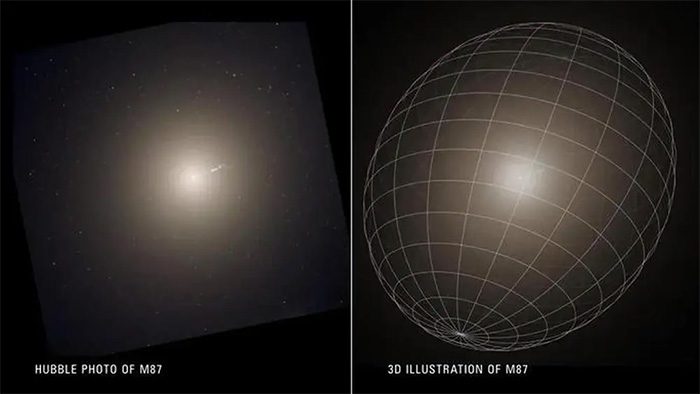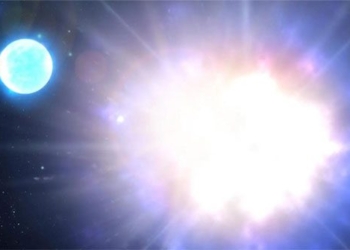“Cosmic Megalopolis” M87, classified as a giant elliptical galaxy located 55 million light-years away, has just revealed a series of astonishing facts about its structure.
According to SciTech Daily, research from the early 20th century by American astronomer Edwin Hubble showed that there are approximately 1 trillion galaxies roaming in the universe, and they exhibit several basic shapes.

2D and 3D images of the giant galaxy M87 – (Image: NASA/ESA/UC Berkeley).
He utilized the most powerful telescope of his time to observe the universe and classify galaxies into different shape groups. Some galaxies, like the Milky Way, which contains Earth, have a spiral disk shape, making it a large “monster” in the world of spiral galaxies.
Another common galaxy type, potentially even more magnificent, is known as the elliptical galaxy, which is not flat but rather resembles a cotton ball. However, their three-dimensional shapes remain a mystery, as we can only view them from afar.
A clip describing the spectacular structure of M87 – (Image: NASA/ESA/UC Berkeley).
A team of scientists from the University of California, Berkeley (USA) used NASA’s Hubble Space Telescope and the WM Keck Observatory (located in Hawaii, USA) to create a 3D map of M87 and described its shape resembling… a potato.
They also determined the mass of the central black hole at the core of the galaxy, which is about 5.4 billion times that of the Sun, nearly double previous predictions based on 2D images.
With a mass even 10 times that of our colossal Milky Way “this supermassive monster” may be the result of numerous galactic mergers; where the enormous black hole also results from the merging of many central black holes from different galaxies.





















































